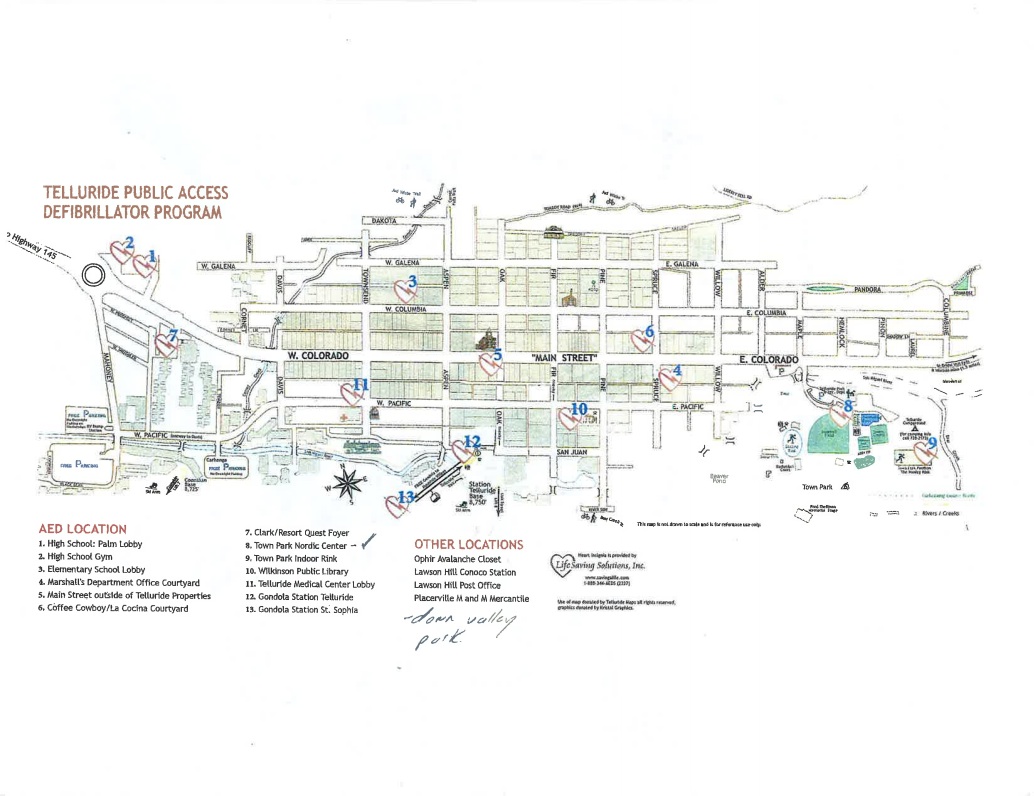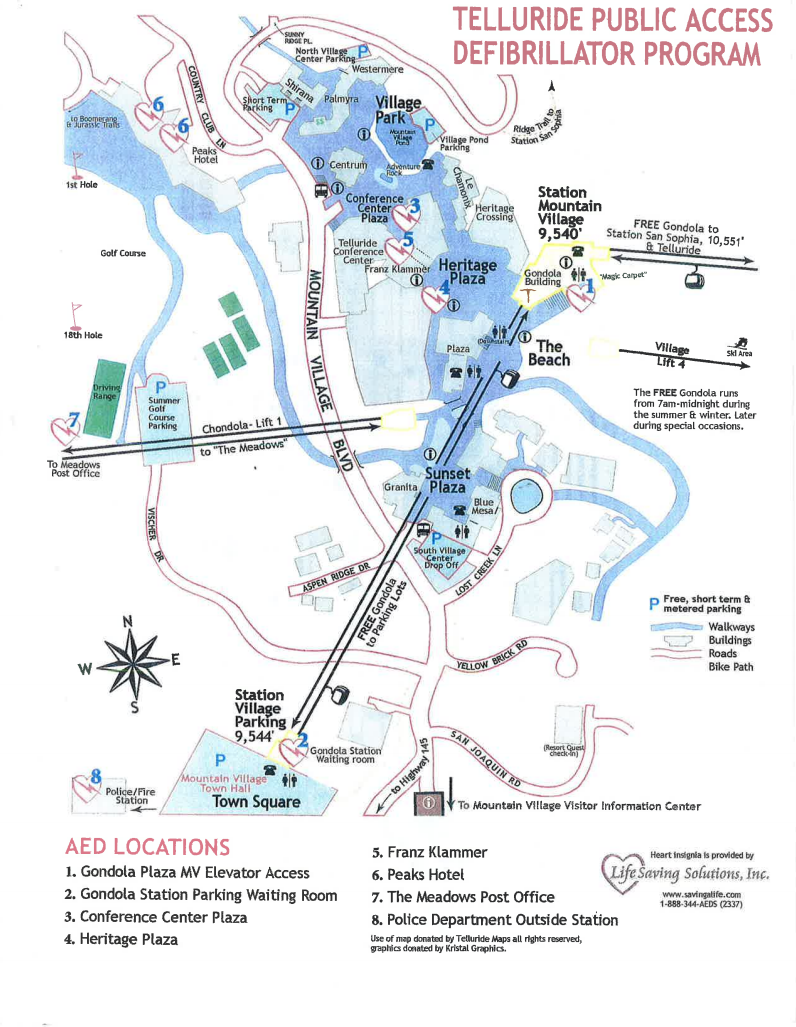
22 Nov Medical Moment: Cardiac Arrest? Getting Help
Telluride Inside… and Out is proud to feature the Telluride Medical Center’s MEDICAL MOMENT, a weekly column that answers common medical questions in pop culture. Have a question for the doctors? Click here to send.
Dr. Dan Hehir answers this week’s question:
Your neighbor has just collapsed in cardiac arrest. Where is the nearest AED and how do you use it?
In 2006, Mark Rosenthal, M.D., a part-time local resident and cardiologist took it upon himself to establish Telluride as a designated American Heart Association recognized Heart Safe Community.
Dr. Rosenthal collaborated with local government entities and stimulated fundraising to install 28 Automatic External Defibrillators (AEDs) in the area. It has been almost 7 years since then and the time is ripe to review what these are and most importantly, where they are and how to use them.
What is an AED and what is it used for?
An AED is a small, portable, electronic device. It can detect life-threatening heart rhythms and then provide an electric shock to reestablish a normal heart rhythm in someone who is in cardiac arrest. When someone goes into cardiac arrest from a reversible heart rhythm time is of the essence. In fact, if defibrillation takes place within the first minute, survivability is more than 90%. However, the chance of survival decreases roughly 10% for each minute that passes. Thus, the sooner an AED can be applied, the higher the chance of a happy outcome.
What sort of training do I need to use one? Answer: None.
The genius of AEDs is that a witness to cardiac arrest does not need any training to use one of the machines. No one should be hesitant to use an AED because they are very simple to operate. Many people with no training at all have saved the lives of others in cardiac arrest using AEDs.
The AED is programmed to talk the user through the process.
The first step is to turn the machine on. It will then tell you to peel off the defibrillation pads and show you where to attach them to the patient. Next, it will analyze the heart rhythm. If it detects a beat that is amenable to defibrillation it will advise you to press the shock button. That button provides a shock of electricity to the patient’s heart which can break the life-threatening heart rhythm. It’s that simple. The critical thing is to know where to find the nearest AED and to get it on the patient as soon as possible.
Where are the AEDs in the Telluride region?
It is a good idea to take a minute right now and review the maps below. At a bare minimum, focus on knowing where the nearest AED is to your house, work, and the places you commonly visit. Think about where you would go to get an AED if someone collapsed in front of you. Besides there being plenty of AEDs in the towns of Telluride and Mountain Village, Lawson Hill has two (at the Conoco and the post office), there’s one in the Ophir maintenance barn foyer, one at the Placerville Mercantile, and one at the airport. AEDs have saved the lives of many people including an individual in Mountain Village. Again, they require no training to be effective. Familiarize yourself with where they are in our extended community and you will be prepared if you are a witness to someone in cardiac stress.
 Editor’s note: The Telluride Medical Center is the only 24-hour emergency facility within 65 miles. As a mountain town in a challenging, remote environment, a thriving medical center is vital to our community’s health.
Editor’s note: The Telluride Medical Center is the only 24-hour emergency facility within 65 miles. As a mountain town in a challenging, remote environment, a thriving medical center is vital to our community’s health.
For more Medical Moments on TIO, Click Here.





Sorry, the comment form is closed at this time.